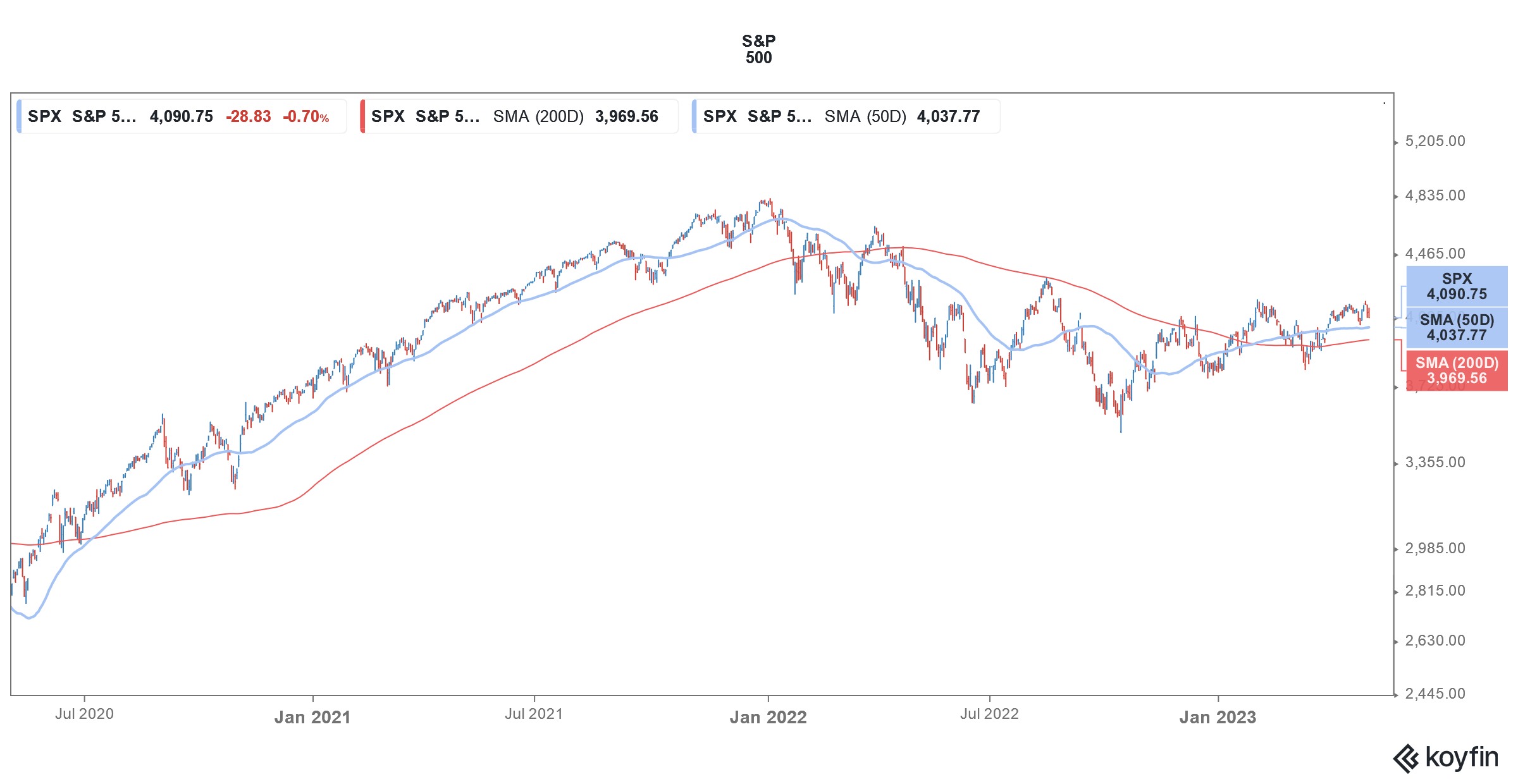As was widely expected the Fed raised rates by 25 basis points yesterday which took the Fed funds rate to 5.0%-5.25%. The US central bank also signaled that it might be the last hike of the current tightening cycle.
It is the tenth-rate hike in the ongoing tightening that started in March 2022 with a 25-basis point rate hike. The Fed graduated to a 50-basis point rate hike at the next meeting. Thereafter the US central bank raised rates by 75 basis points at four consecutive meetings before lowering the pace to 50 basis points in December.
This year, the Fed has raised rates thrice by 25 basis points lifting the interest rates to multi-year highs.
Fed raised rates by 25 basis points
Notably, the 25-basis point rate hike was unanimous, unlike the previous meeting where some members contemplated a 50-basis point rate hike.
Meanwhile, the Fed signaled a pause in the tightening cycle and the post-meeting statement omitted reference to “the Committee anticipates that some additional policy firming may be appropriate.”
The Fed however continued to maintain that it would be data-dependent. The statement said, “In determining the extent to which additional policy firming may be appropriate to return inflation to 2 percent over time, the Committee will take into account the cumulative tightening of monetary policy, the lags with which monetary policy affects economic activity and inflation, and economic and financial developments.”
Fed might pause the rate hike cycle
The Fed’s statement has raised hopes that the US central bank is now nearing the end of the rate hike cycle.
At the press conference, while commenting on whether the current interest rates are restrictive enough to bring inflation back to 2%, Powell said, “We’re going to need data to accumulate on that, [that’s] not an assessment that we’ve made that would mean we’ve reached that point.”
Powell added, “I think it’s not possible to say that with confidence now.”
US inflation has moderated
US inflation moderated to 5% in March, down from 9.1% in June last year. Powell said, “Inflation has moderated somewhat since the middle of last year, nonetheless inflation pressures continue to run high and the process of getting inflation back down to 2% has a long way to go.”
The Fed meanwhile expects inflation to come down and the policy statement said, “tighter credit conditions for households and businesses are likely to weigh on economic activity, hiring and inflation.”
The language was similar to the March meeting which came amid the collapse of SVB and Signature Bank. The current meeting came shortly after the failure of First Republic Bank which was eventually acquired by JPMorgan Chase.
Powell stressed that the acquisition was an “exception” but termed it a “good outcome” for the banking sector.
Powell ruled out rate cuts
For many months, markets have been expecting a Fed pivot – or the US central banking moving from rate hikes to rate cuts. On multiple occasions, Powell has ruled out rate cuts and the May meeting was no different.
He said that the FOMC has “a view that inflation is going to come down not so quickly.”
Powell added, “It will take some time, and in that world, if that forecast is broadly right, it would not be appropriate to cut rates and we won’t cut rates.”
Recession fears have risen
Recession fears have risen amid the Fed’s rate hikes. In the past, Fed said that while its rate hikes might lead to a recession, it is not trying to deliberately enforce one.
Many economists now see a US recession in the next 12 months. Tesla’s CEO Elon Musk is among those who fault the Fed’s rate hikes for the economic recession. Musk said last year that the Fed’s rate hikes would amplify the rate hikes.
Fed is still hopeful of a soft landing
During the press conference, Powell said that the Fed is still hopeful about a soft landing for the US economy.
He said, “There are no promises in this, but it just seems to me that it’s possible that we can continue to have a cooling in the labor market labor market without the big increases in unemployment that have gone with many prior episodes.”
The Fed chair added, “Wage increases have been moving down, and that’s a good sign. Down to more sustainable levels. … I think the case of avoiding a recession is in my view more likely than that of having a recession
Trusted & Regulated Stock & CFD Brokers
What we like
- 0% Fees on Stocks
- 5000+ Stocks, ETFs and other Markets
- Accepts Paypal Deposits
Min Deposit
$200
Charge per Trade
Zero Commission on real stocks
64 traders signed up today
Visit Now67% of retail investor accounts lose money when trading CFDs with this provider. You should consider whether you can afford to take the high risk of losing your money.
Available Assets
- Total Number of Stocks & Shares5000+
- US Stocks
- German Stocks
- UK Stocks
- European
- ETF Stocks
- IPO
- Funds
- Bonds
- Options
- Futures
- CFDs
- Crypto
Charge per Trade
- FTSE 100 Zero Commission
- NASDAQ Zero Commission
- DAX Zero Commission
- Facebook Zero Commission
- Alphabet Zero Commission
- Tesla Zero Commission
- Apple Zero Commission
- Microsoft Zero Commission
Deposit Method
- Wire Transfer
- Credit Cards
- Bank Account
- Paypall
- Skrill
- Neteller
What we like
- Sign up today and get $5 free
- Fractals Available
- Paypal Available
Min Deposit
$0
Charge per Trade
$1 to $9 PCM
Visit Now
Investing in financial markets carries risk, you have the potential to lose your total investment.
Available Assets
- Total Number of Shares999
- US Stocks
- German Stocks
- UK Stocks
- European Stocks
- EFTs
- IPOs
- Funds
- Bonds
- Options
- Futures
- CFDs
- Crypto
Charge per Trade
- FTSE 100 $1 - $9 per month
- NASDAQ $1 - $9 per month
- DAX $1 - $9 per month
- Facebook $1 - $9 per month
- Alphabet $1 - $9 per month
- Telsa $1 - $9 per month
- Apple $1 - $9 per month
- Microsoft $1 - $9 per month
Deposit Method
- Wire Transfer
- Credit Cards
- Bank Account




